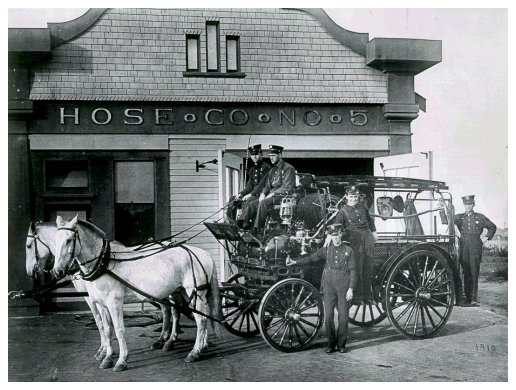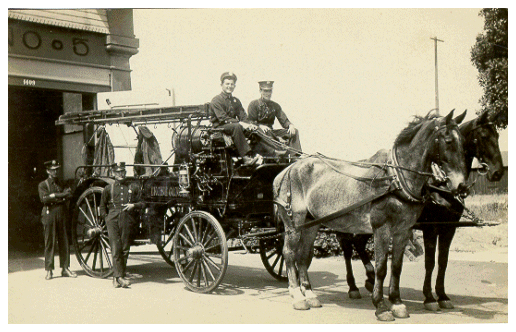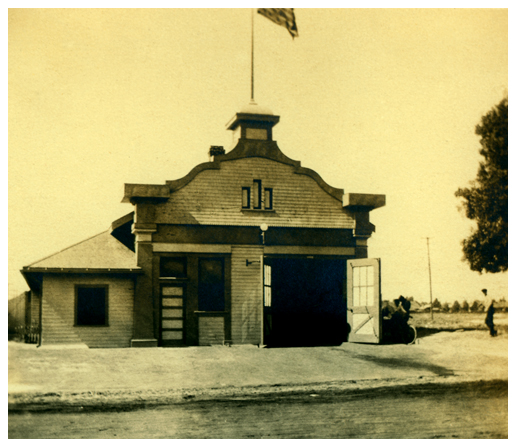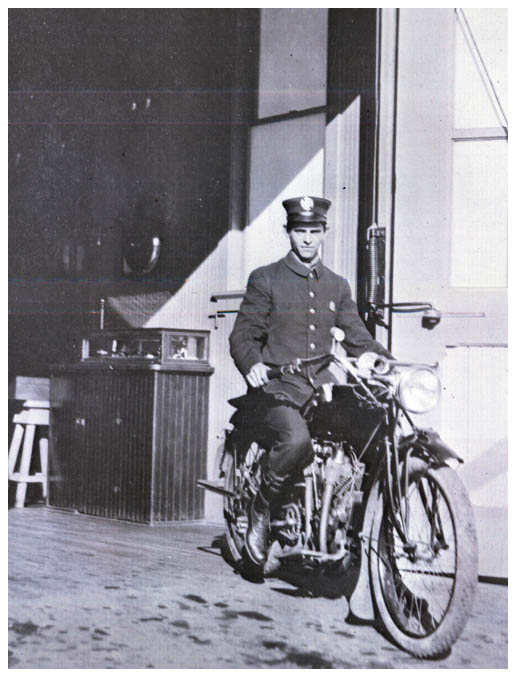Call Fireman T. F. Schneider
Theodore
(Ted) Fredric Schneider was born May 27, 1895 in New Orleans,
Louisiana. The son of German immigrants, who raised him strict but
fair, the tall and lean Ted had the military bearing of a Prussian
officer and the gentleness of a traditional southern gentleman.
Ted came to Los Angeles sometime in 1912 and worked downtown as a
plumber’s helper. Each morning he would go to the stables located
at 9th Street and San Pedro Street (site of the L.A.
Produce Market today), fetch horses, hook them to a plumber’s wagon
and then pick up the plumber.
Ted also worked as a night attendant in a garage located on Vernon
Ave. and Menlo Ave. Few people were mechanically inclined in these
early years of the automobile; however, Ted built a roadster and
owned a motorcycle.
Eventually, Ted was hired by the Bell Telephone Company and trained
as lineman and telephone installer.
In the early years of the Los Angeles Fire Department only two
telephones were allowed in the engine house. One was “The “Business
Phone” and it was black, the other, “The Fire Phone”, was red. Both
phones were direct lines to the Signal Office and neither had a
dial. The Business Phone was used for official department business
only and the Fire Phone was used for dispatch information. Use of
these phones for personal use was strictly forbidden. Naturally,
the firemen circumvented this rule by secretly installing their own
phones. These phones were hidden, usually out behind the firehouse
on the back fence. Soon, all of the firehouses had illegal phones
and now, connected together like a grapevine, news, gossip and
rumors shot fast as lightening throughout the department. These
illegal phones came to be known as “The Grapevine” and Ted installed
them. This obviously made him popular amongst the firemen and this
affiliation enamored him with the Fire Department for the rest of
his life.
In about 1912 Ted became a “Call Fireman” on the Los Angeles Fire
Department at Hose Company No. 5 located at 1439 West Vernon Avenue,
(the future site of (the original) Fire Station 46). A Call Fireman
worked part-time to cover manpower shortages caused by members off
sick, injured or on vacation. They were fully paid on a per shift
basis and also for any fires that they reported to on a day off.
Most Call Firemen eventually became fully appointed. The first
fireman killed in the line of duty on the LAFD was a Call Fireman
assigned to Engine Company No. 2.
Hose Company No. 5, originally a horse drawn company, was motorized in
1911. The apparatus was a Gramm Auto/Fire Extinguisher Combination
Hose Wagon and along with Engine Company No. 26 was one of the first
motorized companies on the LAFD.
In those years Vernon and Normandie, as well as most streets in the
out laying areas of Los Angeles, were unpaved. The firemen
installed chains on the rear tires of the apparatus to add traction
for driving through the dirt and mud. .
A Hose Company did not have a fire pump. It carried 650 feet of 2
˝” hose, 100’ of 1” rubber hose loaded on a hose reel and connected
to a 60-gallon soda/acid water tank and several small portable fire
extinguishers. If the small hand held extinguishers could not
control a fire, a fireman would activate the soda/acid tank by turn
a lever on the side of the tank. This caused a small container
inside the tank containing bicarbonate soda and acid to mix. When
these chemicals mixed they created a gas that would pressurize the
tank and provide a water stream for the rubber hose.
For larger fires, the company would lay a 2 ˝” line off the nearest
fire hydrant and utilize hydrant pressure for its fire stream.
Eventually, an Engine Company, Engines 7, 18, 22, 26 and 31 were the
closest, would arrive, connect to the hydrant and increase hose
stream pressure.
Prior to the
organization of the Department of Water and Power (DWP) private
water companies supplied domestic water to Los Angeles. These
companies used pumps instead of gravity (later utilized by the DWP)
to provide water pressure and were not very reliable for the fire
service. In Hose 5’s district the local water company would switch
the water system pumps to low pressure at night due to the decrease
in demand. If an alarm sounded, Hose 5 would pull out onto the
apron and search the night sky for smoke. If they saw a loom-up,
they would first drive over to the water company a few blocks away
and switch the pumps to increase pressure. Then, they would respond
to the fire.
On September 4, 1912 a fire broke out on the famous Fraser’s Million
Dollar Pier in Ocean Park. Fanned by a strong westerly breeze, the
fire soon threatened the city of Venice. Chief Engineer Eley
answered the request of the Venice Fire Department and the Santa
Monica Fire Department and dispatched the motorized companies,
Engine Company 26 and Hose Company 5, and the horse drawn companies,
Engines 4 and 13 from downtown. Hose 5 responded west on Vernon and
soon encountered heavy traffic as thousands of spectators headed to
the coast to watch the fire. Ted said that it was the longest run
of an LAFD company at the time.
When they arrived they found six city blocks in the vicinity of Rose
Avenue and Trolleyway (Speedway) fully involved with fire. Chief
Eley ordered the LAFD companies to attack the fire on Pier Avenue.
Engine 26 broke out a plate glass window of the “Indoor Plunge” and,
using their hard suctions, drafted from the enormous pool. After an
hour of battling the fire, a 300-gallon gasoline tank exploded and
skyrocketed over their heads. Operating off hydrant pressure, Ted
and his crew fought the fire one block at a time. After knocking
the fire in front of them, they would use their Hose Wagon or
Pacific Electric Red Cars to drag their 2 ˝” fire hoses to the next
block. Then hook to a hydrant and continue fighting fire. By
nightfall, the glare of the flames could be seen from most of Los
Angeles. The fire burned for nearly four hours and destroyed the
pier and damaged or destroyed 225 structures.
|

















